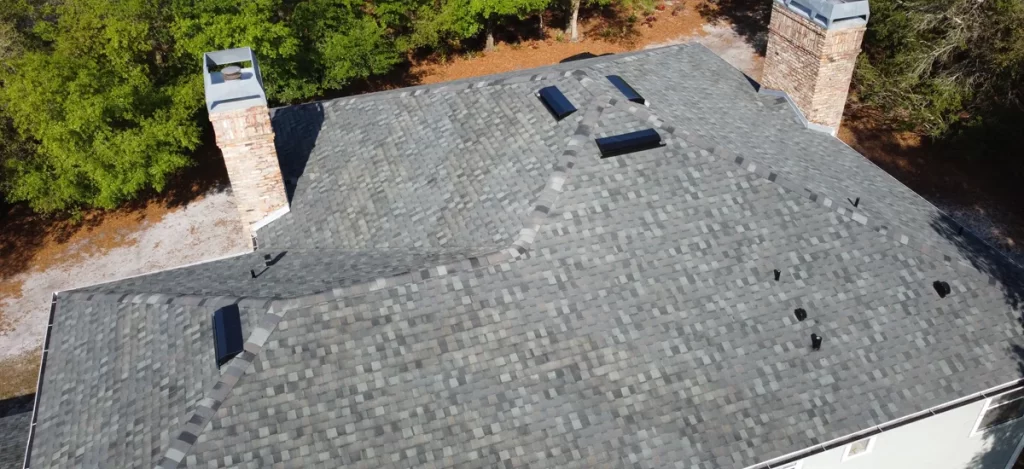Cool Roofing Benefits in Stormy Climates: The Key to Weather-Resistant and Energy-Efficient Homes
Homeowners in storm-prone regions face the relentless challenge of protecting their homes from severe weather while keeping energy costs manageable. Cool roofing has emerged as a significant innovation, offering a range of benefits tailored to such environments. This article will delve into the various advantages of cool roofing in stormy climates, showing how this solution can enhance your home’s resilience, comfort, and efficiency.
Understanding Cool Roofing: What Makes It Different?
Cool roofing materials are designed to reflect more sunlight and absorb less heat than standard roofing. This unique feature is achieved through special coatings, reflective granules, or even lighter-colored roofing materials. The primary goal of a cool roof is to reduce the amount of heat transferred into a building, leading to a cooler interior and less strain on air conditioning systems.
In stormy climates, where extreme weather conditions like heavy rain, strong winds, and fluctuating temperatures are common, cool roofing can offer an array of benefits that go beyond mere temperature regulation.
Enhanced Protection Against Extreme Weather
One of the most significant benefits of cool roofing in stormy climates is the enhanced protection it offers against extreme weather. Storms bring a mix of challenges—heavy rainfall, high winds, and sometimes even hail. Cool roofs are often designed with materials that are more resistant to these elements. For example, certain cool roofing materials are more durable and less prone to cracking under pressure, which is vital when facing high winds or debris impact.
Moreover, cool roofs can reduce the thermal expansion and contraction of roofing materials, a common issue in stormy areas where temperature fluctuations are frequent. By minimizing this wear and tear, cool roofs help extend the lifespan of the roof, ensuring that it remains intact and protective over the years.
Improved Energy Efficiency and Lower Utility Bills
In stormy climates, the weather can shift drastically, leading to high energy consumption as homeowners try to maintain comfortable indoor temperatures. Cool roofing can significantly reduce energy usage by keeping the roof—and subsequently the building—cooler. This is particularly beneficial in humid storm-prone areas where temperatures can soar between storms.
By reflecting more sunlight, cool roofs reduce the need for air conditioning, which in turn lowers electricity bills. This is not just a summer benefit; in regions where storms can occur year-round, having a cooler home consistently reduces energy consumption, making it a cost-effective solution for homeowners.
Resilience to Moisture and Mold Growth
Stormy climates often come with high humidity and frequent rainfall, creating an ideal environment for mold and mildew growth. These can severely damage roofing materials and lead to health issues if they penetrate the home’s interior. Cool roofing materials, especially those with reflective surfaces, tend to be less conducive to mold growth. Their ability to maintain a lower temperature reduces moisture accumulation on the roof, thus minimizing the risk of mold and mildew.
Additionally, many cool roofing systems are designed with enhanced waterproofing features. This helps prevent water from seeping into the roof’s underlayers, which is crucial in stormy climates where heavy rain is a common occurrence. Over time, this added protection can prevent costly repairs and maintain the structural integrity of the roof.
Environmental Impact and Sustainability
Beyond individual benefits, cool roofing also contributes to broader environmental sustainability. Stormy climates are often part of larger ecosystems that are sensitive to changes in weather patterns, including urban heat islands, which are exacerbated by non-reflective, heat-absorbing roofs. Cool roofing helps mitigate these effects by reducing the overall temperature of a building, which can contribute to lowering the surrounding area’s temperature.
Furthermore, the energy efficiency gained from cool roofing reduces the carbon footprint of a home. Less energy consumption means fewer greenhouse gas emissions from power plants, aligning with global efforts to combat climate change. For environmentally-conscious homeowners, investing in a cool roof is a practical way to reduce their impact on the planet while reaping tangible benefits at home.
Insurance Savings and Incentives
Another often-overlooked benefit of cool roofing in stormy climates is the potential for insurance savings. Because cool roofs are more resistant to weather-related damage, some insurance companies offer discounts on homeowners’ policies for those who install them. This is particularly relevant in regions prone to hurricanes, tornadoes, or other severe storms, where the risk of roof damage is higher.
Moreover, various government and local programs provide incentives for installing energy-efficient cool roofs. These can range from tax credits to rebates, further reducing the overall cost of installation and making it a financially savvy investment for homeowners.
Increased Property Value
Homeowners looking to increase the value of their property should also consider the benefits of cool roofing. In stormy climates, prospective buyers are likely to prioritize homes that offer superior weather protection and energy efficiency. A cool roof can be a strong selling point, potentially increasing the market value of the home.
Moreover, as awareness of environmental sustainability grows, features like cool roofing can make a property more attractive to eco-conscious buyers. This added value is not just in the potential sale price but also in the marketability of the home in regions where extreme weather is a growing concern.
Maintaining Cool Roofs in Stormy Climates
While the benefits of cool roofing are numerous, it’s essential to maintain these roofs properly, especially in stormy climates. Regular inspections are crucial to ensure that the roof remains in good condition, particularly after severe weather events. Homeowners should look out for signs of damage, such as missing granules on reflective shingles, cracks in coatings, or any areas where water might be pooling.
Cleaning the roof periodically is also vital, as debris from storms can accumulate and block drainage paths, leading to potential water damage. Some cool roofing materials may require reapplication of reflective coatings over time to maintain their effectiveness. By keeping up with these maintenance tasks, homeowners can ensure that their cool roof continues to provide the maximum benefits for years to come.
Choosing the Right Cool Roofing Material
When considering a cool roof for a stormy climate, it’s important to choose the right material that suits both the local weather conditions and the home’s specific needs. Here are a few popular options:
- Cool Shingles: These are similar to traditional shingles but are made with specially coated granules that reflect more sunlight. They are durable and ideal for regions with strong winds and hail.
- Metal Roofing: Metal roofs can be highly reflective and are extremely durable, making them a good choice for storm-prone areas. They can withstand high winds and are resistant to fire, another advantage in certain climates.
- Tile Roofing: Cool tiles are available in various materials, including clay and concrete, and are naturally reflective. They are also highly durable, though they can be heavier and may require additional structural support.
- Single-Ply Membranes: These are lightweight, reflective, and often used in commercial buildings, but they can also be a good option for residential homes in stormy climates due to their excellent waterproofing properties.
Each of these materials offers different levels of protection and efficiency, so homeowners should consult with a roofing professional to determine the best choice for their specific situation.
FAQs
What makes cool roofing different from traditional roofing?
Cool roofing materials are designed to reflect more sunlight and absorb less heat than traditional roofing, which helps keep buildings cooler and reduces energy costs. In stormy climates, they also offer enhanced durability and resistance to weather-related damage.
Can cool roofing withstand severe storms?
Yes, cool roofing materials are often more durable and resilient to the effects of severe storms, including high winds, heavy rain, and hail. Their ability to minimize thermal expansion and contraction also helps prevent damage over time.
How does cool roofing improve energy efficiency?
Cool roofing reduces the amount of heat that enters a building, which lowers the need for air conditioning. This leads to reduced energy consumption and lower utility bills, particularly in climates with hot weather or high humidity.
Are there any government incentives for installing cool roofing?
Yes, many regions offer incentives for installing energy-efficient cool roofs, including tax credits, rebates, and insurance discounts. These programs can significantly reduce the cost of installation.
Does cool roofing help with mold prevention?
Cool roofs are less prone to mold growth because they stay cooler and dry faster than traditional roofs. This reduces the accumulation of moisture, which is a primary factor in mold and mildew development.
What maintenance is required for cool roofing?
Regular inspections and cleaning are essential for maintaining a cool roof, especially after severe weather. It’s also important to reapply reflective coatings if needed to ensure continued energy efficiency and protection.
Conclusion
For homeowners in stormy climates, cool roofing offers a blend of protection, efficiency, and sustainability that traditional roofing cannot match. From reducing energy costs to enhancing a home’s resilience against extreme weather, the benefits of cool roofing are extensive and long-lasting. As the frequency of severe storms continues to rise, investing in a cool roof is a proactive step toward safeguarding your home and enhancing its value.














